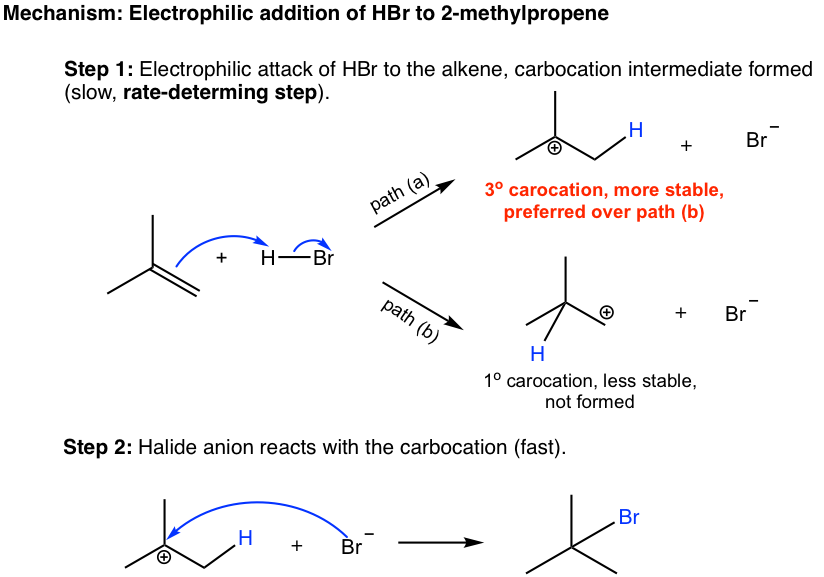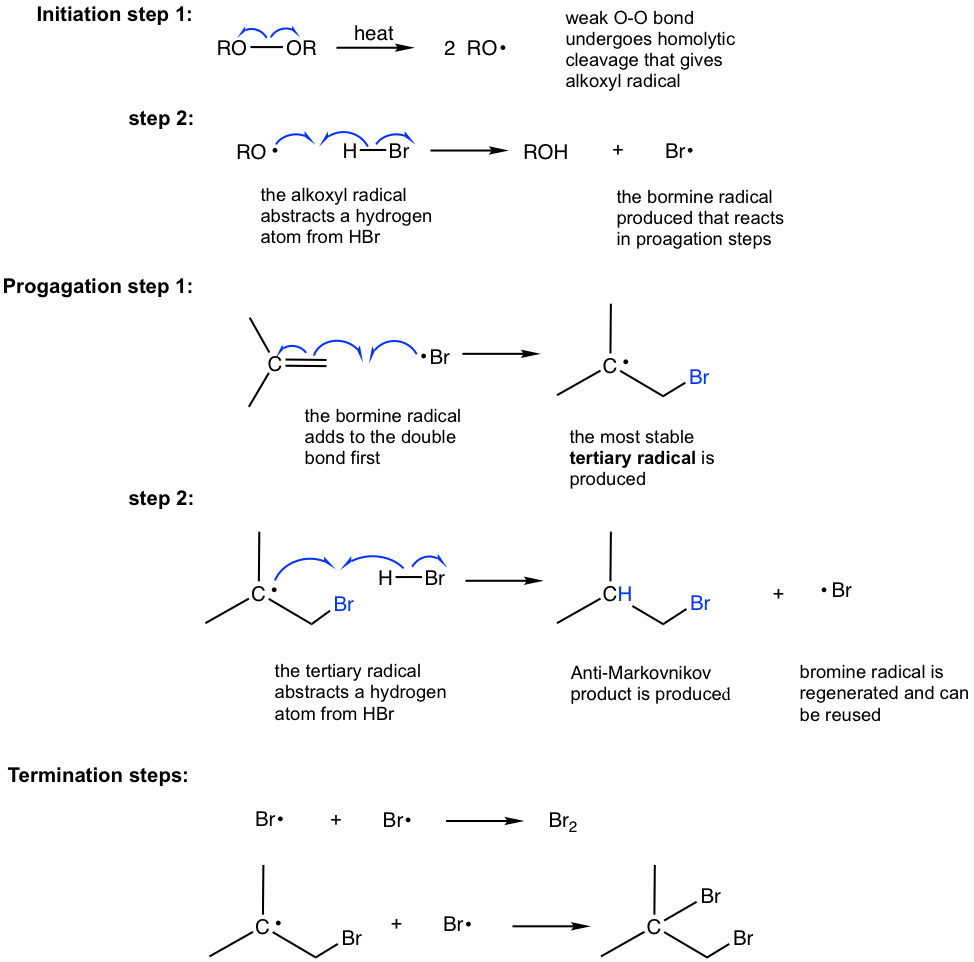Addition of Hydrogen Halides to Alkenes Mechanism
Addition Reactions of Alkenes. The Cl freed in this process now attacks from the rear.

9 2 Addition Of Hydrogen Halides To Symmetrical Alkenes Chemistry Libretexts
Drawing alkyne formulas from names.

. CH 3 CHCH 2 HI CH 3 CHICH 2 H. Drawing alkene formulas from names. Electrophilic addition to conjugated dienes occurs through 12 and 14-addition mechanism out of Q.
Alkenes react with water in the presence of acid as catalyst to form alcohols. Drawing formulas from names. A vinyl halide is produced after the addition of one equivalent of HX.
Basically it follows a 3-step mechanism. Hydrohalogenation is the addition of hydrogen halides such as HCl or HI to alkenes to yield the corresponding haloalkanes. Both equivalents of HX add to the triple bond in the same step.
The ability of hydrocarbons to bond to themselves is known as catenation. Delydrobalogenation of vinyi halides is essentially an E2 process. Which of the following options correctly describe the addition of a hydrogen halide to an alkyne.
For most simple alkyl halides however it is proper to envision a balanced transition state in which there has been an equal and synchronous change in all the bonds. Markovnikovs Rule with Practice Problems. Mechanism The mechanism of the reaction involves the following three steps.
When two equivalents of HX add to an alkyne the halogen atoms will end up on. The steps that are involved are explained below. Such a model helps to explain an important regioselectivity displayed by these elimination reactions.
For instance alkanes alkynes or alkenes the amount of bonded hydrogen decreases in alkenes and alkynes. The antiMarkovnikovs addition results from a hydroborationoxidation reaction. Such an encirclement arrangement and open stereochemical framework endow the single Pd atom with the power to activate hydrogen H 2 thereby enabling the catalytic hydrogenation of alkenes under mild conditions.
The NHC ligands on the cluster as revealed by density functional theory DFT calculations are key factors in determining the selectivity of the. Here we report a practical approach to overcome the limitations of visible lightmediated chemical photocatalysis by using the energies of two photons in one catalytic cycle Photocatalytic alkylation or arylation reactions as reported by MacMillan 3 17 Stephenson Yoon and others employ a typical PET process fig. Drawing formulas from names.
S N 1 S N 2 E1 or E2 the Largest Collection of Practice Problems. Carbon and hydrogen while in the ketones it is bonded to two carbon atoms. If the two carbon atoms at the double bond are linked to a different number of hydrogen atoms the halogen is found preferentially at the carbon with fewer hydrogen.
The addition of pyridine to the mixture of alcohol and thionyl chloride results in the formation of alkyl halide with inverted configuration. Evidence for this mechanism is as follows. A stereochemical study revesled.
Select all that apply. In addition to primary amines secondary amines led to reductive coupling with nitriles and provided tertiary chiral amines in up to 85 yields and 99 ee Fig. As shown in the following figure a hydrogen ion catalyzes the Markovnikovs addition.
Reaction Mechanism Click Here for Sample Questions The haloalkanes or aryl halides with sp 3 or sp 2 hybridised carbon atoms when reacted with Magnesium metal give Grignard reagent which is an organometallic compound. The Role of the Solvent in S N 1 S N 2 E1 and E2 Reactions. Acid-Catalyzed Hydration of Alkenes with Practice Problems.
Notably for products 210 and 214 12 to 14 racemization is observed which can be explained by the comparably high acidity of the α-hydrogen atom in the case of the starting 2. Matching alcohols to their names I. S1 leftThe excited dye.
Drawing formulas from names. Inversion results because the pyridine reacts with ROSOCl to give ROSONC 5 H 5 before anything further can take place. If two or more structurally distinct groups of beta-hydrogens are present in a given reactant then several.
The primary alcohols elimination reactions follow the E2 mechanism whereas the secondary and tertiary alcohols elimination reaction follows the E1 mechanism. Formation of alkenes. Mechanism of Dehydration of Alcohols.
Dehydration of alcohols follows the E1 or E2 mechanism. S N 1 S N 2 E1 E2 How to Choose the Mechanism. From alkenes i By acid catalysed hydration.
Products 214 to 215. The elements of water can be added to the doublebonded carbons of an alkene in either a Markovnikovs or an antiMarkovnikovs manner. This is mainly due to the self-bonding or catenation of carbon that prevents the complete saturation of the hydrocarbon by the formation of double or triple bonds.
Drawing alcohol formulas. Represented by R-Mg-X where R is an alkyl or aryl group while X is a halogen the Grignard reagent easily forms a carbon-carbon. In case of unsymmetrical alkenes the addition reaction takes place in accordance with Markovnikovs rule Unit 13 Class XI.
With such capabilities they can. The carbonyl compounds in which carbon of carbonyl group is bonded to carbon or hydrogen and oxygen of hydroxyl moiety -OH are known as carboxylic acids while in compounds where carbon is attached to carbon or hydrogen and nitrogen of -NH2 moiety or to halogens are called amides.

Electrophilic Addition Reactions Of Alkenes Mcc Organic Chemistry

10 2 Reactions Of Alkenes Addition Of Hydrogen Halide To Alkenes Organic Chemistry I

Electrophilic Addition Of Hydrogen Halides To Alkenes Youtube

10 2 Reactions Of Alkenes Addition Of Hydrogen Halide To Alkenes Organic Chemistry I
Comments
Post a Comment